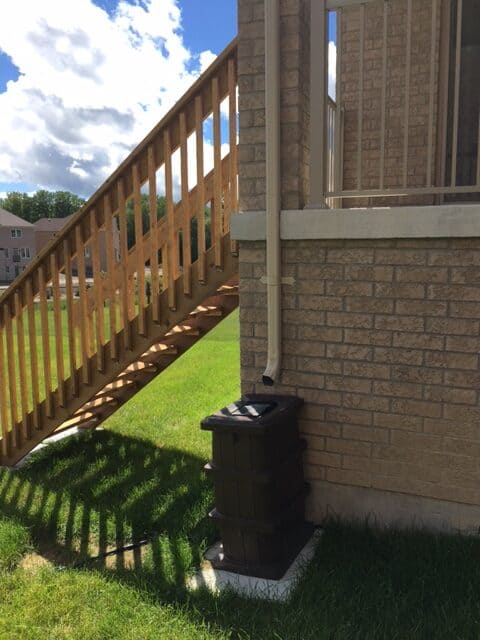Zoysia grass is a warm-season grass that goes dormant and turns brown during the fall and winter months in cooler climates. The specific timing of when zoysia turns brown can depend on several factors, such as the climate, the specific cultivar of zoysia, and the maintenance practices being used.
Generally, zoysia grass will start to turn brown when soil temperatures drop below 50°F (10°C). In most cases, this occurs in the late fall or early winter months, but it can vary depending on the location. Once the temperatures start to warm up in the spring, zoysia grass will begin to green up again.
A zoysia lawn can be successfully grown but as we’ll see below, some locations are better suited to this grass than others.
Zoysia turns brown when entering a dormant phase
Zoysia grass is a warm-season grass that goes dormant and turns brown during the fall and winter months in cooler climates. This is a natural process that allows the grass to conserve energy and survive the cold winter months. The grass will begin to green up again in the spring once temperatures warm up and the growing season resumes.
If your Zoysia grass has turned brown and gone dormant, there are a few things you can do to help it stay healthy during dormancy:
- Avoid overwatering: During the winter months, Zoysia grass requires less water than it does during the growing season. Overwatering can promote disease and root rot in general.
- Keep leaves and debris off the lawn: Leaves and other debris can block sunlight from reaching the grass, which can impede its ability to green up in the spring.
- Reduce foot traffic: Walking or driving on dormant Zoysia grass can damage the grass blades and lead to thinning.
- Avoid fertilization: Fertilizing dormant Zoysia grass can actually harm the grass and promote disease.
- Plan for aeration and dethatching in the spring: Aeration and dethatching can help promote healthy growth and reduce soil compaction in the spring.
It’s important to note that Zoysia grass will naturally turn brown and go dormant during the fall and winter months, and this is a normal part of the grass’s growth cycle. With proper care and maintenance, the grass should recover and begin to green up again in the spring.
What climates in the US are best suited to zoysia grass?
Zoysia grass is a warm-season grass that is best suited for growing in the southern half of the United States, where the summers are hot and the winters are mild.
Some of the climates in the US that are well-suited to zoysia grass include:
- The Southeastern United States: Zoysia grass thrives in the warm, humid climate of the Southeast, where temperatures rarely dip below freezing.
- The Gulf Coast Region: Zoysia grass is well-adapted to the hot and humid climate of the Gulf Coast region, where it can tolerate the high levels of rainfall.
- The Southwestern United States: Zoysia grass can also be grown in the arid regions of the Southwest, where it can withstand high temperatures and low humidity.
- The Southern California Coast: Zoysia grass is well-suited to the coastal areas of Southern California, where the mild climate and moderate rainfall provide optimal growing conditions.
It’s important to note that within each of these regions, there may be variations in climate that could affect the growth and performance of zoysia grass. It’s always best to consult with a local lawn and garden expert or turfgrass specialist to determine if zoysia grass is the right choice for your specific location.
Zoysia grass quick facts
Zoysia can be a great choice for your lawn if you’re in one of the climates suited for it to grow.
Here’s a table summarizing some key information about zoysia grass:
| Topic | Description |
|---|---|
| Benefits | Drought tolerant, heat tolerant, disease resistant, low maintenance, creates a dense and attractive lawn. |
| Where to Grow | Best suited for southern half of the United States, where summers are hot and winters are mild. |
| Cultivars | Popular cultivars include: Zoysia matrella, Zoysia japonica, Zoysia tenuifolia, and Zoysia hybrid cultivars (e.g., Zeon, Emerald, El Toro). |
| Maintenance | Regular mowing (1″ – 2″), watering as needed, periodic dethatching, and aeration to reduce soil compaction. |
| Fertilization | Fertilization should be done in the spring and summer with a slow-release nitrogen fertilizer. The specific fertilization requirements will depend on the cultivar and location. |
| Pest Control | Zoysia grass is generally resistant to pests, but can be susceptible to chinch bugs, armyworms, and grubs. Pest control measures may be necessary in some areas. |


